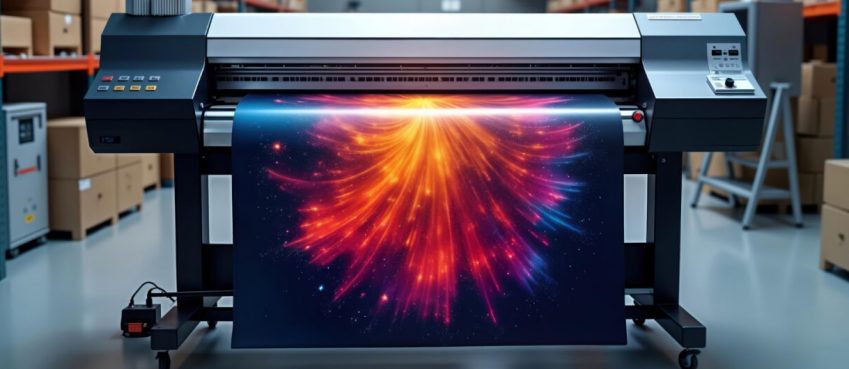
A spectrometry analysis is an instrument that can be used to measure the components of a physical phenomenon. They are used to study different samples and allow scientists to not only identify but thoroughly analyze all the atoms of a sample. They have a wide range of uses and are necessary in many fields. Here are a few of the most well-known.
Astronomy
Astronomy is a fascinating subject but also incredibly complex. Several different processes are used in the field, spectroscopy being one of them. Astronomical spectroscopy aims to measure three bands of radiation: radio waves, X-rays, and visible light. Different methods are required, depending on the frequency. Essentially, the process is used to discover what celestial objects are made of and to determine their characteristics, including density, temperature, and the speed at which they travel through space.
Astronomers determine the complete chemical composition of a star or nebula’s atmosphere, as well as the different pressures and distances between the galaxies, based on spectroscopic measurements. Exoplanets can also be explored much easier this way, as although space telescopes can identify planets and other astronomical objects, they cannot characterize them.
Also read: Best CRM software for 2021Food Quality
Food safety is crucial for the well-being of the general public, and rejecting its practices can result in serious disease. A NIR spectrometer uses wavelengths between 700 and 2500 nm, meaning that it can be widely used in food testing. The process ensures that the foods are up to quality standards and meet all the safety protocols. Changes in pH, temperature, and pressure can all affect the quality of foods. Spectroscopy can measure the effects and determine whether a product is fit for consumption.
Any food sample absorbs different wavelengths depending on its composition, and that pattern can be integrated into a calibration model. From then on, advanced math will be used to convert the data to predictions regarding the components of the sample, such as fat and moisture. Although it sounds like it takes a very long time, the process can be completed in about a minute.
Pharmaceuticals
Mass spectrometry can also be used in the pharmaceutical industry, as it is a very precise method that can detect even the most minute changes in molecules. The substances are generally vaporized during the analysis and then subjected to ion separation. Analysis is part of the standard identification and safety control processes. The devices can confirm the purity of the ingredients and determine all the chemical components of a given sample. Quality control is essential here as well.
Since medication is manufactured in highly industrialized areas, it’s important to determine that nothing toxic leaches into the drugs that could make them harmful. Since the containers have to be stored before reaching the shelves, spectrometry can also be used to determine whether any spoilage intervened and made the meds lose some of their quality. This way, medication that would be completely inefficient doesn’t end up being purchased.
Also read: Best Online Courses to get highest paid in 2021Forensics
The scientific processes used to detect criminal activity naturally require procedures that demand no small amount of finesse. Spectrometry is also used in forensics, where it has numerous use cases. The test is nearly universal in its ability to identify unknown substances, meaning it can easily detect illicit drugs both in and outside the human body. Many scientists working in the field see it as the gold standard, the ultimate analysis that can even crack cases.
If a rare material is found at the scene of a crime, the spectrometer will ascertain whether it is specific to the area and originated at the scene or is more likely to be found in an entirely different location. For instance, different types of soil or metals are found in higher concentrations in specific geographic regions. Some substances and materials can determine an individual’s field of work. This means investigators will have an easier time putting together different pieces of information to answer questions more efficiently.
Environmental Analysis
Environmental spectrometry is a branch that provides data concerning policy decisions that can influence the health and well-being of both individuals and ecosystems. This makes it very important, and it is currently undergoing rapid development. Some of the processes it uses involve the composition of water samples and the concentration of different compounds in the air. Soil, waste, and wastewater are also analyzed.
Mass spectrometry used in this area can detect different air pollutants and determine how hazardous they are and how likely to damage human health. The amount of particles present in the air at any given time can be unimportant for many, but people dealing with allergies or chronic lung disease would want to know to remain indoors during the timeframes that pose the highest risks.
Also read: 7 Best Sites Like Artists And Clients To InspireClinical Research
Simply put, clinical research studies health and ailments affecting people. There are two main categories: clinical trials and observational studies. It collects data aiming to determine the efficiency of products, collaborates with medical teams, and presents findings through conferences and writing in scientific journals. So, where does spectrometry fit into all of this? It is used in medical labs to diagnose metabolic deficiencies, check for enzymes and biomarkers, and can also help with toxicology tests.
Through metabolite analysis, it can diagnose disease rapidly and efficiently. Inborn metabolism issues, a heterogeneous disorder group that can either be inherited or manifest as a spontaneous mutation, can also be discovered through spectrometry. They involve failures in how fatty acids are either stored or broken down in the body. Monitoring drug treatments and analyzing steroids and their interactions are just a few of the other practical applications that make a lot of difference in the field.
Spectrometry is a complex procedure with a wide range of applications. From the human body to outer space and from food to supplements, it has many use cases and helps make life safer. It can even be used to analyze textiles and their characteristics, including the strength and durability of the fibers, the dyes, and other variables. Although many are not aware of its impact, it’s not an exaggeration to say it is necessary for human life.
Top 10 News
-
01
Top 10 Deep Learning Multimodal Models & Their Uses
Tuesday August 12, 2025
-
02
10 Google AI Mode Facts That Every SEOs Should Know (And Wha...
Friday July 4, 2025
-
03
Top 10 visionOS 26 Features & Announcement (With Video)
Thursday June 12, 2025
-
04
Top 10 Veo 3 AI Video Generators in 2025 (Compared & Te...
Tuesday June 10, 2025
-
05
Top 10 AI GPUs That Can Increase Work Productivity By 30% (W...
Wednesday May 28, 2025
-
06
[10 BEST] AI Influencer Generator Apps Trending Right Now
Monday March 17, 2025
-
07
The 10 Best Companies Providing Electric Fencing For Busines...
Tuesday March 11, 2025
-
08
Top 10 Social Security Fairness Act Benefits In 2025
Wednesday March 5, 2025
-
09
Top 10 AI Infrastructure Companies In The World
Tuesday February 11, 2025
-
10
What Are Top 10 Blood Thinners To Minimize Heart Disease?
Wednesday January 22, 2025







